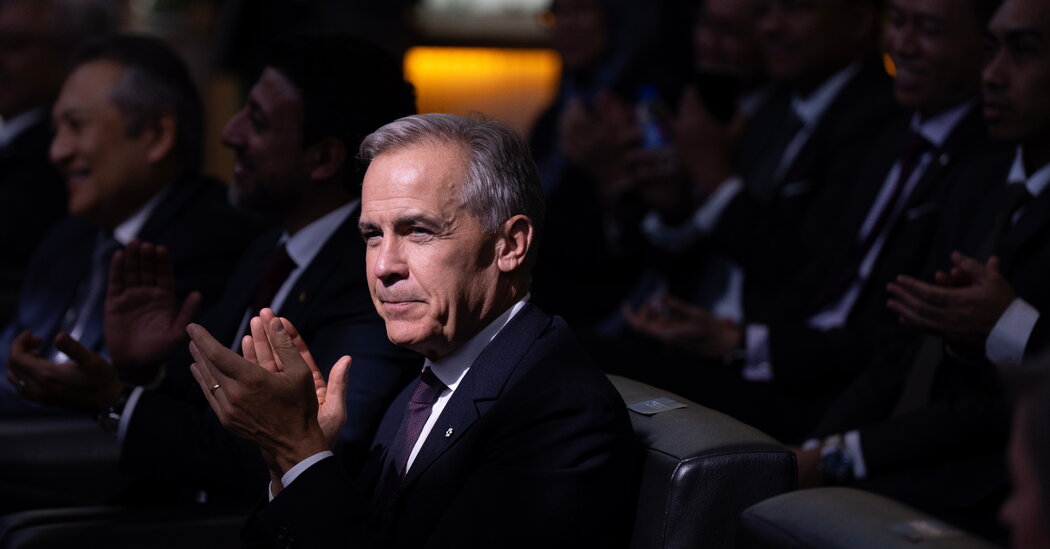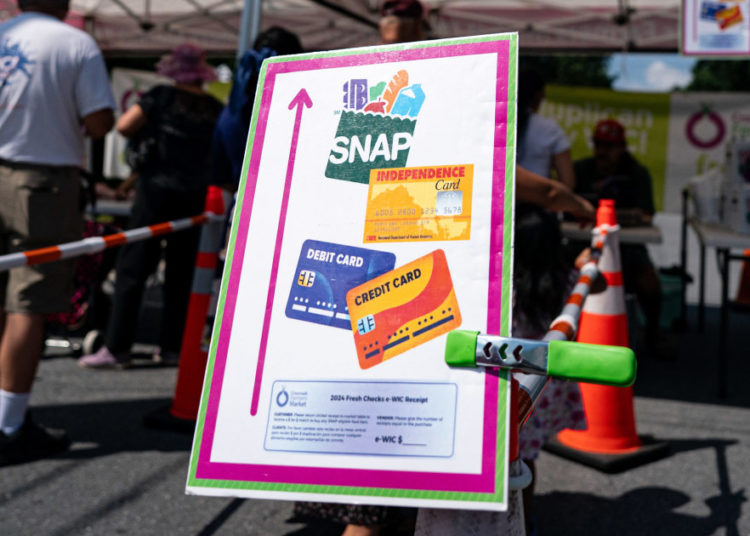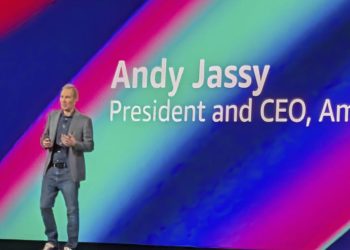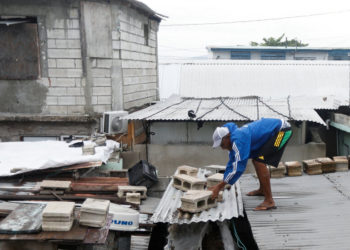As Prime Minister Mark Carney of Canada left for a weeklong swing through Asia, he faced a worsening economic picture at home. Plants were closing and jobs were being lost. Inflation was edging up, and there were signs that the country was sliding toward a recession.
Then President Trump made matters more fraught when, angered over a television advertisement that featured former President Ronald Reagan criticizing tariffs, he vowed to impose even more levies on Canada.
Now, with relations with the United States at one of their lowest points, Mr. Carney is under pressure to show he has a plan to move Canada away from its long-established economic dependence on its neighbor, and he is banking on Asia to help.
But that carries its own risks. Mr. Carney said he planned to meet this week in South Korea with China’s top leader, hoping to reset a caustic relationship, end a trade dispute and restore closer ties.
Canada has had deeply tense relations with China over, among other things, findings of Chinese interference in Canadian elections. And, adding complexity to the pivot Mr. Carney is attempting, the Trump administration may be unhappy with his China overtures, even as the American president is also scheduled to meet with China’s top leader, Xi Jinping, this week.
Faced with a trade war with the United States, Canada’s biggest trading partner, Mr. Carney has set an ambitious goal of doubling Canadian exports to other countries within a decade. Expanding trade with Asia is central to Mr. Carney’s strategy.
While the 11 countries that form the Association of Southeast Asian Nations, or ASEAN, are Canada’s second-largest trading partner, they only consume about 10 percent of Canada’s exports. By comparison, 80 percent of Canadian exports go to the United States.
Mr. Carney will have to engage in some salesmanship on his trip to help counter a reputation Canada has in Asia of being something of a “fair-weather friend,” interested in the region only when it suits its own purposes, said Tricia Yeoh, an associate professor of international relations at the University of Nottingham Malaysia.
But Mr. Trump’s unpredictable approach to foreign relations and his aggressive, tariff-heavy trade policy give Canada an opening.
“Canada can make this convincing argument that it is more of a reliable trading partner: We’re not going to slap on tariffs the way the U.S. does, we are the friendlier party, you want to negotiate with us,” Professor Yeoh said. “That’s what I would say is a strong selling point.”
As he wound up his visit to Kuala Lumpur, the Malaysian capital, where both he and Mr. Trump attended the ASEAN leaders’ summit, Mr. Carney emphasized the importance of Asia to Canada’s efforts to transform its trade policy.
“This is a region of nearly 700 million consumers with a market worth over $5 trillion,” Mr. Carney told reporters. “Federal ministers are working hard securing deals and building relationships across Asia.”
High on Mr. Carney’s to-do list are finalizing a free-trade deal with all of the ASEAN nations and cutting bilateral agreements with some of its members.
While Mr. Carney’s trade goal has met with some skepticism at home, Canada has already made inroads into Asia in some areas.
While many of Mr. Carney’s discussions during this trip have focused on energy, including nuclear power, Ian McKay, Canada’s special envoy for the region, said in Singapore on Tuesday that farm exports and technology were also prominent.
The country’s first large liquefied natural gas plant, in British Columbia, sent an initial shipment in July to South Korea. Mr. Carney’s government, hoping to add to that, has approved a doubling of the plant’s capacity, labeling it a project of national interest, which will accelerate approvals and construction. (Petronas, the energy company owned by the Malaysian government, is among the investors in the project’s first phase.)
But that could also set Canada on another collision course with the Trump administration. During his trip to Asia, Mr. Trump signed trade deals that committed Cambodia and Malaysia to buy American liquefied natural gas, though it is unclear how the United States would enforce those pledges.
Still, Canada has several advantages over American gas, explained Heather Exner-Pirot, director of energy, natural resources and environment at the Macdonald-Laurier Institute, a Canadian public-policy research group.
Liquefied natural gas plants in the United States are largely located along the Gulf of Mexico, increasing shipping time to Asia.
More important, Ms. Exner-Pirot said, is Canada’s abundant supply compared with that of the United States, where artificial-intelligence data centers are raising demand for electricity, much of it generated by burning gas.
“When you look at Canada, there’s just no way that we will run out and that we will say, ‘No, we can’t share anymore, we need it domestically,’” Ms. Exner-Pirot said. “That could potentially happen in the United States.”
In Kuala Lumpur, Mr. Carney toured a large research center operated by BlackBerry, a Canadian company, to get a sense of another area where Canada could gain more traction in Asia. (Long after abandoning making phones, BlackBerry now makes security software and operating systems largely used by carmakers, including many in Asia.)
The company is a model for what Mr. Carney hopes other Canadian firms can achieve in Asia. It has contracts with several governments in the region, including Malaysia.
John Giamatteo, BlackBerry’s chief executive, said Mr. Trump’s return to office had made BlackBerry’s corporate Canadian citizenship a significant asset. Customers, particularly governments, he said, have grown increasingly leery of dealing with large American tech giants, particularly those that store data in the United States.
Amplifying that, Mr. Giamatteo said, has been an increase in Canadian government assistance in lining up overseas business since Mr. Carney entered office this year. “It’s been exceptional, particularly in this region,” he said, referring to Mr. Carney’s government.
Mr. Carney has also made sure to position Canada as a buyer, not just a seller. This week, he will visit a shipyard in South Korea that is bidding to sell up to a dozen diesel-electric submarines to Canada as part of Mr. Carney’s program to expand military spending.
Still, Mr. Carney’s pursuit of new opportunities in Asia may have its limits. Canada already has a mosaic of trade pacts in Asia, so adding other agreements is unlikely to significantly increase trade, Professor Yeoh said.
Not everyone agrees with Mr. Carney’s plan to diversify Canada’s trading partners. By focusing too much on the rest of the world, Canada may derail a review next year of the trade pact between Canada, the United States and Mexico, which has so far shielded a majority of Canada’s exports from Mr. Trump’s tariffs. (Mr. Trump has imposed significant tariffs, however, on Canadian steel, aluminum, automobiles and some wood products, all of which are key industries.)
“America always needs to win in every negotiation,” said Goldy Hyder, the president and chief executive of the Business Council of Canada, which represents the chief executives of Canada’s largest corporations. “The job of Canada and, frankly, almost every other country in the world is to find the win that you can live with.”
Still, given Mr. Trump’s latest tirade directed at Canada, Mr. Carney may have no choice but to find other countries to do business with.
As he left Malaysia, Mr. Trump said he was not interested in resuming talks with Canada or speaking with Mr. Carney anytime soon.
“Canada has been ripping us off for a long time,” Mr. Trump said. “One of the most difficult countries to deal with has been Canada.”
Ian Austen reports on Canada for The Times. A Windsor, Ontario, native now based in Ottawa, he has reported on the country for two decades. He can be reached at [email protected].
The post Scolded by Trump, Canada’s Prime Minister Turns to Asia for Trade appeared first on New York Times.




